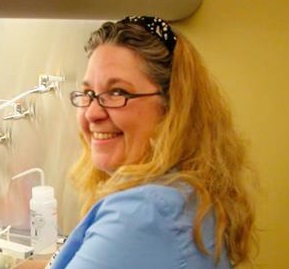Related Research Articles

Testosterone is the primary male sex hormone and androgen in males. In humans, testosterone plays a key role in the development of male reproductive tissues such as testicles and prostate, as well as promoting secondary sexual characteristics such as increased muscle and bone mass, and the growth of body hair. It is associated with increased aggression, sex drive, the inclination to impress partners and other courting behaviors. In addition, testosterone in both sexes is involved in health and well-being, where it has a significant effect on overall mood, cognition, social and sexual behavior, metabolism and energy output, the cardiovascular system, and in the prevention of osteoporosis. Insufficient levels of testosterone in men may lead to abnormalities including frailty, accumulation of adipose fat tissue within the body, anxiety and depression, sexual performance issues, and bone loss.

The Kinsey Institute for Research in Sex, Gender, and Reproduction is a research institute at Indiana University. Established in Bloomington, Indiana, in 1947 as a nonprofit, the institute merged with Indiana University in 2016, "abolishing the 1947 independent incorporation absolutely and completely."

Indiana University Bloomington is a public research university in Bloomington, Indiana. It is the flagship campus of Indiana University and its largest campus with over 40,000 students. Established as the state's seminary in 1820, the name was changed to "Indiana College" in 1829 and to "Indiana University" in 1838.

The dark-eyed junco is a species of junco, a group of small, grayish New World sparrows. The species is common across much of temperate North America and in summer it ranges far into the Arctic. It is a variable species, much like the related fox sparrow, and its systematics are still not completely resolved.

The American tree sparrow, also known as the winter sparrow, is a medium-sized New World sparrow.

The blue-headed vireo is a Neotropical migrating song bird found in North and Central America. There are currently two recognized subspecies that belong to the blue-headed vireo. It has a range that extends across Canada and the eastern coast of the United-States, Mexico and some of Central America. It prefers large temperate forests with a mix of evergreen trees and deciduous under growth.

The Indiana University School of Medicine (IUSM) is a major, multi-campus medical school located throughout the U.S. state of Indiana and is the graduate medical school of Indiana University. There are nine campuses throughout the state; the principal research, educational, and medical center is located on the Indiana University–Purdue University Indianapolis (IUPUI) campus in Indianapolis. With 1,452 MD students, 203 PhD students, and 1,356 residents and fellows in the 2022–23 academic year, IUSM is the largest medical school in the United States. The school offers many joint degree programs including an MD/PhD Medical Scientist Training Program. It has partnerships with Purdue University's Weldon School of Biomedical Engineering, other Indiana University system schools, and various in-state external institutions. It is the medical school with the largest number of graduates licensed in the United States per a 2018 Federation of State Medical Boards survey with 11,828 licensed physicians.
The Office of the Provost at Indiana University Bloomington oversees the academic programs, research, and policies of 16 schools on the Indiana University Bloomington campus. Together, these units offer more than 550 individual degree programs and majors.

Michael Alexander McRobbie is an Australian–American computer scientist and university administrator. He served as the 18th president of Indiana University from 2007 to 2021. Upon stepping down from the IU presidency, McRobbie was replaced by Pamela Whitten, who became the 19th president of Indiana University on July 1, 2021. On July 1, 2021, he assumed the titles of university chancellor, president emeritus and university professor. He is the third person to serve as university chancellor in the university's more than 200-year-old history.
John William Ryan was an American academic administrator who most notably served as the President of Indiana University for sixteen years.

Indiana University (IU) is a system of public universities in the U.S. state of Indiana.
The challenge hypothesis outlines the dynamic relationship between testosterone and aggression in mating contexts. It proposes that testosterone promotes aggression when it would be beneficial for reproduction, such as mate guarding, or strategies designed to prevent the encroachment of intrasexual rivals. The positive correlation between reproductive aggression and testosterone levels is seen to be strongest during times of social instability. The challenge hypothesis predicts that seasonal patterns in testosterone levels are a function of mating system, paternal care, and male-male aggression in seasonal breeders.
The Margaret Morse Nice Medal is an ornithological award made annually by the Wilson Ornithological Society (WOS). It was established in 1997 and named in honour of ornithologist Margaret Morse Nice (1883-1974). The medal recipient is expected to give the plenary lecture at the WOS annual general meeting.
Risk-sensitive foraging models help to explain the variance in foraging behaviour in animals. This model allows powerful predictions to be made about expected foraging behaviour for individual groups of animals. Risk sensitive foraging is based on experimental evidence that the net energy budget level of an animal is predictive of type of foraging activity an animal will employ. Experimental evidence has indicated that individuals will change the type of foraging strategy that they use depending on environmental conditions and ability to meet net energy levels. When individuals can meet net energy level requirements by accessing food in risk aversive methods they do so. However, when net energy level requirements are not met by employing risk aversive methods, individuals are more likely to take risk prone actions in order to meet their net energy requirements.
The Indiana University School of Nursing is an academic college of higher education connected to Indiana University with its main research and educational facilities on the Indiana University – Purdue University Indianapolis campus and at Indiana University Bloomington. It is known for its nursing research and education, scholarship of teaching and nursing practice, and for its collaborations with IU hospitals and clinical partners. Established in 1914 as the Indiana University Training School for Nurses, it awarded its first nursing diplomas in 1917 and was renamed the IU School of Nursing in 1956. It offers a four-year Bachelor of Science in Nursing (BSN) degree, a Master of Science in Nursing (MSN) degree, and two doctoral degrees: Doctor of Nursing Practice (DNP) and Doctor of Philosophy (Ph.D.). The IU nursing school has received multiple research grants from the National Institutes of Health.
Elizabeth Adkins-Regan is an American comparative behavioral neuroendocrinologist best known for her research on the hormonal and neural mechanisms of reproductive behavior and sexual differentiation in birds. She is currently a professor emeritus in the Department of Psychology and the Department of Neurobiology and Behavior at Cornell University.

Shahzeen Attari is a professor at the O'Neill School of Public and Environmental Affairs at Indiana University Bloomington. She studies how and why people make the judgements and decisions they do with regards to resource use and how to motivate climate action. In 2018, Attari was selected as an Andrew Carnegie Fellow in recognition of her work addressing climate change. She was also a fellow at the Center for Advanced Study in the Behavioral Sciences (CASBS) from 2017 to 2018, and received a Bellagio Writing Fellowship in 2022.
William D. Timberlake was a psychologist and animal behavior scientist. His work included behavioral economics, contrast effects, spatial cognition, adjunctive behavior, time horizons, and circadian entrainment of feeding and drug use. He is best known for his theoretical work: Behavior Systems Theory and the Disequilibrium Theory of reinforcement.

Elaina Marie Tuttle was an American behavioral geneticist and biology professor whose academic research focused on ornithology and study of the white-throated sparrow. During her graduate and post-doctoral work, she investigated how bird sexual selection has evolved and the trade-offs in reproduction that have occurred alongside sperm competition mechanisms in sparrows and in the fairy wren.
Barnett "Barney" A. Schlinger is Professor of Integrative Biology & Physiology and of Ecology & Evolutionary Biology at the University of California, Los Angeles (UCLA).
References
- 1 2 3 4 5 6 7 8 9 10 11 12 13 14 15 16 17 18 19 20 "Departmental CV — Ellen D. Ketterson" (PDF). www.indiana.edu. January 2015. Archived from the original (PDF) on 2015-06-06. Retrieved 2018-10-16.
- 1 2 3 4 5 6 "Ellen D. Ketterson: IU News Room: Indiana University". newsinfo.iu.edu. Retrieved 2018-10-17.
- ↑ "Evolutionary Biologist Ellen Ketterson". Profiles — Indiana Public Media. Retrieved 2018-10-17.
- ↑ "Leadership". Environmental Resilience Institute Part of the Prepared for Environmental Change Grand Challenge. Retrieved 2018-10-17.
- ↑ "IU launches toolkit to help communities cope with environmental change". News at IU. Retrieved 2018-10-17.
- ↑ "Past Officers of the ASN". www.amnat.org. Retrieved 2018-10-17.
- ↑ "Ellen Ketterson". www.amnat.org. Retrieved 2018-10-17.
- 1 2 "Mountain Lake Biological Station, U.Va". mlbs.virginia.edu. Retrieved 2018-10-17.
- 1 2 "Virginia: Research: Ketterson Lab: Indiana University Bloomington". Ketterson Lab. Retrieved 2018-10-17.
- ↑ Ketterson, Ellen D.; Nolan, Val (July 1976). "Geographic Variation and Its Climatic Correlates in the Sex Ratio of Eastern-Wintering Dark-Eyed Juncos (Junco Hyemalis Hyemalis)". Ecology. 57 (4): 679–693. doi:10.2307/1936182. ISSN 0012-9658. JSTOR 1936182.
- ↑ Ketterson, Ellen D.; Nolan, Val (1983), "The Evolution of Differential Bird Migration", Current Ornithology, Springer US, pp. 357–402, doi:10.1007/978-1-4615-6781-3_12, ISBN 9781461567837
- 1 2 Ketterson, Ellen D.; Nolan, Val (Nov 1992). "Hormones and Life Histories: An Integrative Approach". The American Naturalist. 140: S33–S62. doi:10.1086/285396. hdl: 2022/17322 . ISSN 0003-0147. PMID 19426026. S2CID 44692155.
- 1 2 3 Ketterson, Ellen D.; Nolan, Val; Wolf, Licia; Ziegenfus, Charles (Dec 1992). "Testosterone and Avian Life Histories: Effects of Experimentally Elevated Testosterone on Behavior and Correlates of Fitness in the Dark-Eyed Junco (Junco hyemalis)" (PDF). The American Naturalist. 140 (6): 980–999. doi:10.1086/285451. hdl: 2022/17323 . ISSN 0003-0147. S2CID 56413684.
- 1 2 Ketterson, Ellen D.; Nolan, Val; Cawthorn, Michelle J.; Parker, Patricia G.; Ziegenfus, Charles (2008-06-28). "Phenotypic engineering: using hormones to explore the mechanistic and functional bases of phenotypic variation in nature". Ibis. 138 (1): 70–86. doi:10.1111/j.1474-919x.1996.tb04314.x. ISSN 0019-1019.
- ↑ Enstrom, David A.; Ketterson, Ellen D.; Nolan, Jr, VAL (1997-11-01). "Testosterone and mate choice in the dark-eyed junco". Animal Behaviour. 54 (5): 1135–1146. doi:10.1006/anbe.1997.0555. ISSN 0003-3472. S2CID 6826752.
- ↑ Raouf, Samrrah A.; Parker, Patricia G.; Ketterson, Ellen D.; Nolan, Val; Ziegenfus, Charles (1997-11-22). "Testosterone affects reproductive success by influencing extra–pair fertilizations in male dark–eyed juncos (Aves: Junco hyemalis)". Proceedings of the Royal Society of London B: Biological Sciences. 264 (1388): 1599–1603. doi:10.1098/rspb.1997.0223. ISSN 0962-8452. PMC 1688731 .
- ↑ Casto, Joseph M.; Nolan, Jr., Val; Ketterson, Ellen D. (Apr 2001). "Steroid Hormones and Immune Function: Experimental Studies in Wild and Captive Dark-Eyed Juncos (Junco hyemalis)". The American Naturalist. 157 (4): 408–420. doi:10.1086/319318. ISSN 0003-0147. PMID 18707250. S2CID 16296790.
- ↑ Ketterson, Ellen D.; Nolan, Jr., Val (July 1999). "Adaptation, Exaptation, and Constraint: A Hormonal Perspective". The American Naturalist. 154 (S1): S4–S25. doi:10.1086/303280. hdl: 2022/17324 . ISSN 0003-0147. PMID 29586711. S2CID 4376696.
- ↑ McGlothlin, Joel W.; Ketterson, Ellen D. (2008-05-12). "Hormone-mediated suites as adaptations and evolutionary constraints". Philosophical Transactions of the Royal Society of London B: Biological Sciences. 363 (1497): 1611–1620. doi:10.1098/rstb.2007.0002. ISSN 0962-8436. PMC 2606720 . PMID 18048296.
- ↑ Fryling, Kevin. "New IU Grand Challenge initiative to tackle environmental threats". News at IU. Retrieved 2018-10-17.
- ↑ "Kent Farm: About Us: Research and Teaching Preserve : Indiana University". Research and Teaching Preserve. Retrieved 2018-10-17.
- ↑ "Indiana: Research: Ketterson Lab: Indiana University Bloomington". Ketterson Lab. Retrieved 2018-10-17.
- ↑ "California: Research: Ketterson Lab: Indiana University Bloomington". Ketterson Lab. Retrieved 2018-10-17.
- ↑ "Wyoming: Research: Ketterson Lab: Indiana University Bloomington". Ketterson Lab. Retrieved 2018-10-17.
- ↑ "Idaho: Research: Ketterson Lab: Indiana University Bloomington". Ketterson Lab. Retrieved 2018-10-17.
- ↑ "South Dakota: Research: Ketterson Lab: Indiana University Bloomington". Ketterson Lab. Retrieved 2018-10-17.
- ↑ "Mexico and Guatemala: Research: Ketterson Lab: Indiana University Bloomington". Ketterson Lab. Retrieved 2018-10-17.
- ↑ "With songbird as star, 'Ordinary Extraordinary Junco' movie puts spotlight on evolution, IU research: IU News Room: Indiana University". newsinfo.iu.edu. Retrieved 2018-10-17.
- ↑ Yakusawa, Ken (2008). "In Memoriam: Val Nolan, Jr., 1920–2008" (PDF). The Auk. 125 (3): 749–750. doi:10.1525/auk.2008.3708. S2CID 84653455.
- ↑ "AOS Coues Award Recipients | American Ornithology". www.americanornithology.org. Retrieved 2018-10-17.
- ↑ Smallwood, John A. (1998). "Proceedings of the Seventy-Ninth Annual Meeting". The Wilson Bulletin. 110 (4): 585–598. JSTOR 4164018.
- ↑ "John Simon Guggenheim Foundation | Ellen D. Ketterson". www.gf.org. Retrieved 2018-10-17.
- ↑ "Miller Award Citation 2014, to Ellen Ketterson". The Condor. 117 (1): 130. February 2015. doi: 10.1650/CONDOR-14-187.1 .
- ↑ "Ketterson to receive Distinguished Animal Behaviorist Award". Department of Biology. Retrieved 2018-10-17.
- ↑ "Ketterson Lab website".